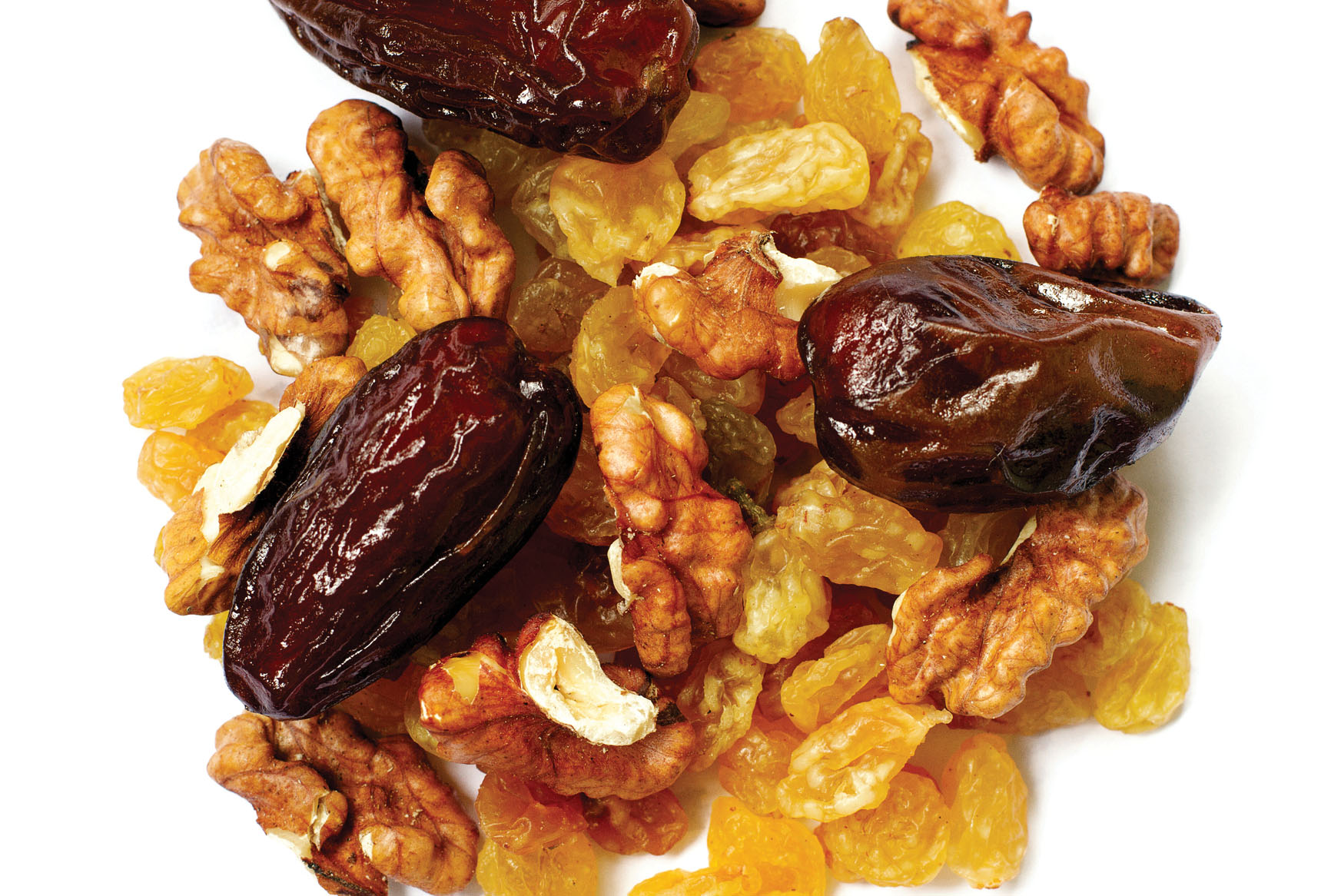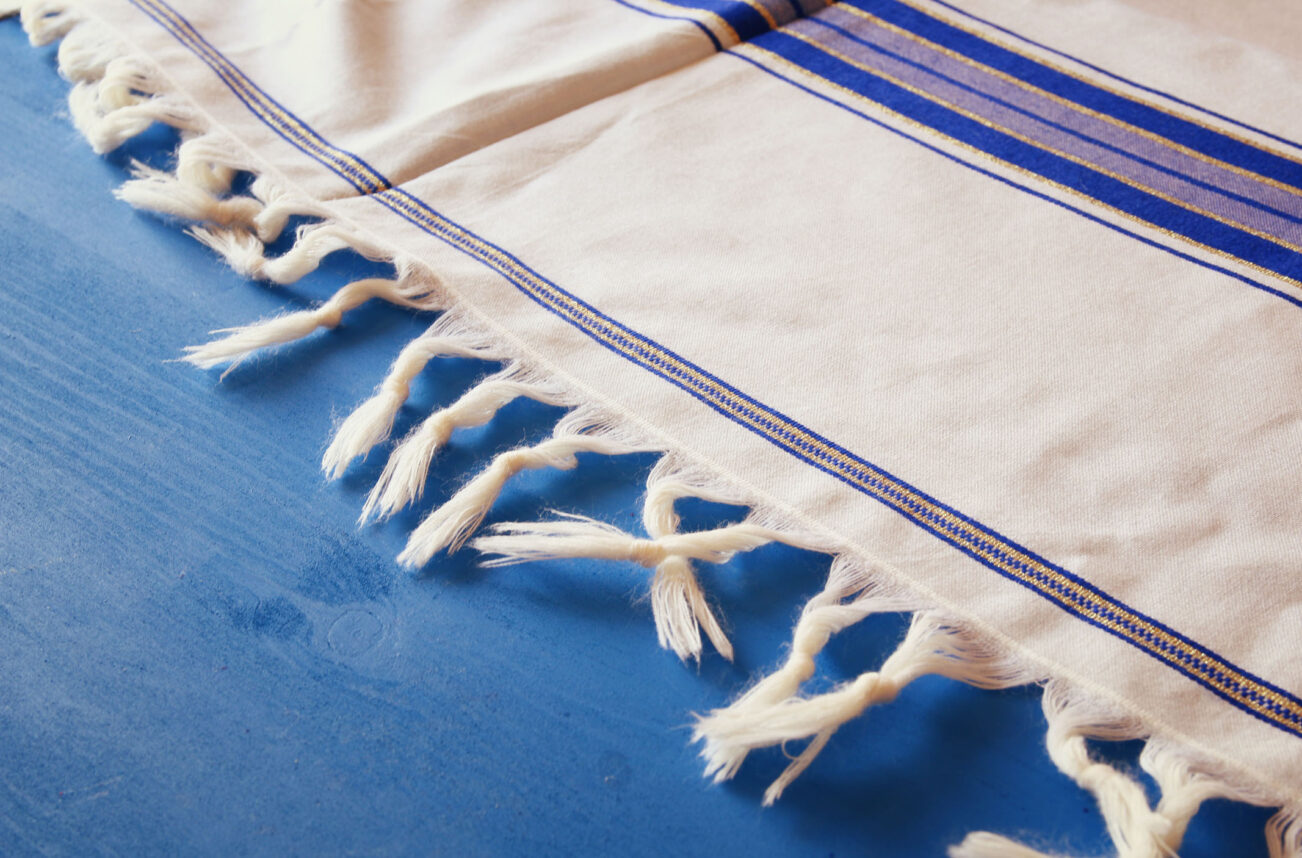
At the risk of offending half of our readers, the first time someone shared with me that they had “a lot of charoses,” I worried that they had a skin condition.
I had never heard “charoset” pronounced that way. In fact, as soon as I typed the word for this week’s column, autocorrect requested to change it to “charoset.” As I do each time autocorrect attempts to change my title to “a weekly communist for the Jewish Journal of Greater Los Angeles,” I had to override the suggestion. According to my family, I may be a dictator, but I’m no communist.
Modern Jewish vernacular uses words such as “charoset,” “challah,” “hamantaschen,” and “cholent” as if every Jew in the world knows their meaning and uses these words. I learned the word “charoset” years after coming to the United States. Until I was exposed to that word, I, and 100,000 other Iranian Jews, simply called this Passover staple the only name we had ever known for it: halegh.
Halegh is the indescribably flavorful and aromatic mixture that Iranian Jews prepare for the mortar-like, symbolic food that is eaten during the Passover seder. In my opinion, Persian Jewish halegh is the charoset to end all charosets.
Iranian Jews prepare enough Passover halegh to last beyond the seder, enjoying it all week with matzah, spread on fruit, or by itself. An apple and walnut-based charoset is delicious, but halegh, with its warm notes of cardamom and cloves, embodies the tastes of the Middle East.
Before the Iranian revolution, my late grandmother made her famous Passover halegh with sweet wine. After the revolution, alcohol was banned in the Islamic Republic of Iran, per Islam’s prohibition, though Jews were allowed to make their own wine, to be consumed only one day a week on Shabbat. My mother was too reluctant to use wine in her halegh after the revolution, though the prohibition never stopped my father from trying to find a bottle of his beloved (illegal) Turkish liquor. One day, he was found in possession of alcohol and imprisoned, but that is a story for another column.
Back to the tale of halegh and charoset: Readers may be shocked to learn that many types of Persian halegh do not contain a single chopped apple. As a child, whenever I helped my mother prepare Passover halegh, I didn’t snack on apples, but on the glorious hazelnuts and walnuts on the kitchen counter. At the time, I didn’t know what kinds of Passover chores my American peers had to endure, but my mother forced me to de-scale several giant, dead trout and violently pound roughly 100 walnuts on the dining room table with a heavy walnut cracker. But my childhood Passover obligations are also part of a story for another column.
Whether on blogs or in the food section of The New York Times, stories that feature recipes follow professional standards (for example, ingredients should appear in the order they are added), and they offer exact measurements and easy-to-follow instructions. But ask anyone who has ever attempted to extract a delicious recipe from a Sephardic or Mizrahi woman, and they will attest that there is simply no point in trying to write down anything exact.
I am offering my mother’s famous halegh recipe to readers in two forms: the way she attempted to describe the recipe to me during a frustratingly comedic phone call last week, and the actual recipe that I deduced for myself.
Therefore, I am offering my mother’s famous halegh recipe to readers in two forms: the way she attempted to describe the recipe to me during a frustratingly comedic phone call last week, and the actual recipe that I deduced for myself. There’s no reason to only publish the sanitized, exact version; to know and love a Mizrahi or Sephardic mother is to know that she will never be able to give you her delectable recipes like a Westerner. In anticipation of this, I recorded the phone call with my mother, in which she attempted to share her halegh recipe. The following are her exact words, translated from Persian to English:
Flora’s Incredible Passover Halegh (As Told by Flora)
Yield: “I don’t know. Do I look like I have time to sit and measure how much halegh I have to make for 40 people?”
Ingredients:
Some walnuts.
About the same amount of hazelnuts as walnuts.
Hazelnuts are excellent when toasted in the oven, but not for this recipe. Are you eating enough nuts? You need them for your brain.
Dates. And raisins. Get the big, black kind of raisins. The small ones aren’t sweet.
Pomegranate juice.
Maybe no pomegranate juice, but a few spoons of pomegranate molasses.
Either apple juice and pomegranate molasses, or pomegranate juice. But not both.
You really need apple juice in this. Don’t use the fake kind. I don’t know why there’s so much fake fruit juice in America.
Wine.
Actually, no wine. My mother used to make it with wine. I don’t. It makes guests drunk. Forget it.
Put it all in the food processor. Turn it on two to three times.
Wait, I forgot the spices. I used to buy the spices separately, but now, I just buy them together in a bottle of halegh seasoning. I don’t remember the name. But the market always has it this time of year.
Use one spoon of the spice mix. Or two spoons. But don’t fill up the whole spoon.
Now put everything in the food processor. If it gets stuck in your teeth, it’s too big.
Pulse it again. Turn it on three times. If it’s too runny, you ruined it.
Later that evening (during a separate phone call):
I forgot to mention that you need to soak the dates and the raisins. And don’t serve your guests dates filled with pits.
Flora’s Incredible Passover Halegh (As Deduced by Her Daughter)
Yield: Roughly 4 cups
1 cup walnuts
1 cup hazelnuts
½ cup of large, brown raisins, soaked in water for 30 minutes and drained (add more for sweeter halegh)
½ cup pitted medjool dates, soaked in water for 30 minutes and drained (add more for sweeter halegh)
1-2 tbsp charoset spice mix (available online and in stores) or 2 tsp ground cinnamon, 2 tsp ground cardamom, 1 tsp ground nutmeg, ½ tsp ground ginger
2 tbsp of pomegranate molasses, depending on preferences for flavor and sourness (available online, but best purchased at kosher markets that only sell brands that are kosher for Passover)
1-1 ½ cups fresh apple juice
In a large food processor, pulse the nuts, dates, raisins, and spices until resembling a coarse mixture. Add the pomegranate molasses and apple juice and pulse several times more, until mixture is combined, but not runny.
Refrigerate in a tightly sealed container for one week.
Whether traditional Ashkenazi apple-cinnamon charoset, Persian halegh, the Iraqi version that consists of only date syrup and nuts; Moroccan charoset truffle balls; the Yemenite kind, which has black figs; darker Egyptian charoset that almost resembles jam; Indian jaroset, which contains wine vinegar and mango; or the charoset of the Jews of Suriname, a small country in northeast South America, which uses coconut, this beloved Passover seder mixture holds the same message for Jews worldwide: Our sorrow may feel so heavy, burdensome and metaphorically muddy that it seems virtually inescapable. And yes, wherever we have settled, we have always been at the mercy of one nut or another (literally speaking, though my mother also warns of walnut pieces that stay in one’s teeth). But the sweetness of survival and redemption is always near, with or without an extra cup of wine. Chag Kasher V’Sameach.
Tabby Refael is an award-winning writer, speaker and weekly columnist for The Jewish Journal of Greater Los Angeles. Follow her on X and Instagram @TabbyRefael.
























 More news and opinions than at a Shabbat dinner, right in your inbox.
More news and opinions than at a Shabbat dinner, right in your inbox.